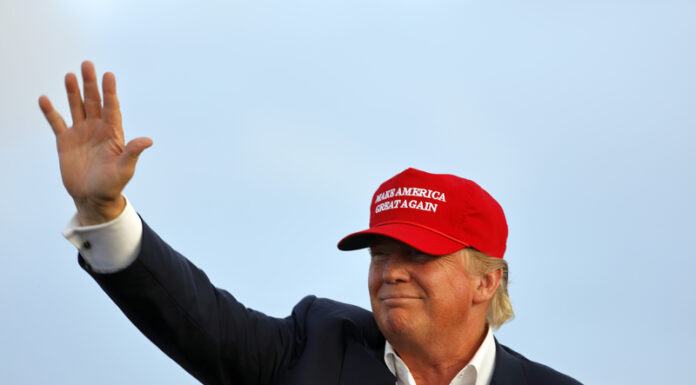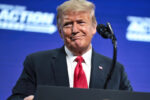President Donald Trump initiated a significant wave of airstrikes on Saturday, March 15, 2025, targeting Iran-supported Houthi rebels in Yemen. Images released by the White House show President Trump observing the military operation while wearing golf attire, including a red MAGA hat signed with his autograph. These images were shared on the social media platform X.
The accompanying caption stated, “President Trump is taking action against the Houthis to defend US shipping assets and deter terrorist threats. For too long American economic and national threats have been under assault by the Houthis. Not under this presidency.”
Photographs depict Trump with a large black headset, monitoring the real-time bombings in the Middle East. National Security Adviser Mike Waltz and Secretary of State Marco Rubio were also featured in these posts.
In a diplomatic move, the State Department disclosed that Secretary Rubio had communicated with Russian Foreign Minister Sergei Lavrov before the strikes. According to a statement, this was part of efforts “to continue working towards restoring communication between the United States and Russia.”
The military operation, described by Trump as “decisive and powerful,” targeted several Houthi leaders and missile defenses in Yemen. The mission involved the U.S. Navy, with the USS Harry S. Truman carrier strike group stationed in the Red Sea playing a key role.
Trump announced the strikes on Truth Social, stating, “They have waged an unrelenting campaign of piracy, violence, and terrorism against American, and other, ships, aircraft, and drones. YOUR ATTACKS MUST STOP, STARTING TODAY,” he warned, emphasizing that the U.S. would employ “overwhelming force” to achieve peaceful objectives.
The president also issued a warning to Iran, urging it to cease support for the proxy group, promising to hold Iran “fully accountable” for its actions. Trump cautioned that “hell will rain down” if the attacks persist.
The Houthi-run health ministry reported significant casualties as a result of the American strikes. The Associated Press noted that at least 53 people were killed, including women and children, with numerous others wounded. The strikes impacted the capital, Sanaa, and other areas like the northern province of Saada.
The Houthi political bureau condemned the strikes as a “war crime” and vowed to retaliate. The group stated they would continue to target shipping in the Red Sea until Israel lifts its blockade of Gaza, despite U.S. military action.
Since November 2023, the Houthis have conducted over 100 attacks on international shipping, disrupting global trade and prompting many companies to reroute vessels around southern Africa, which, according to Trump, costs the global economy “many BILLIONS of Dollars.”
The attacks have resulted in the sinking of two ships and the death of four crew members, according to U.S. officials. The Houthis maintain control of the capital, Sanaa, and the northwestern region of Yemen, remaining resilient despite previous military efforts against them.
This operation marks the first extensive missile strikes against the Houthis under Trump’s second term. While the previous Biden administration executed similar actions, Trump’s administration appears to be adopting a more assertive stance, with officials indicating that the campaign may extend for weeks.
Some critics have questioned the military action in light of Trump’s campaign promises. Social media users noted the contradiction with his election pledge to avoid starting new wars.
Nonetheless, the administration has framed the strikes as necessary to safeguard American shipping interests and naval assets. Trump described the Houthis’ actions as an “unrelenting campaign of piracy, violence and terrorism” financed by Iran.
Experts suggest that while the strikes represent the largest U.S. military operation in the Middle East since Trump’s return to office, they may not fully achieve their goals. The Houthis control a rugged, mountainous region and have proven resilient despite the challenges faced by Iran’s other regional allies.
The U.S. has classified the Houthi movement as a “foreign terrorist” organization, reinforcing the administration’s firm stance against the group.
As the situation evolves, the international community is closely watching the responses from both the Houthis and Iran. Analysts suggest that Iran is unlikely to intervene directly, but it may seek to respond through other means, such as resuming nuclear negotiations.
The strikes and their repercussions present a significant test for Trump’s Middle East policy and the administration’s approach to threats against critical international shipping lanes.








